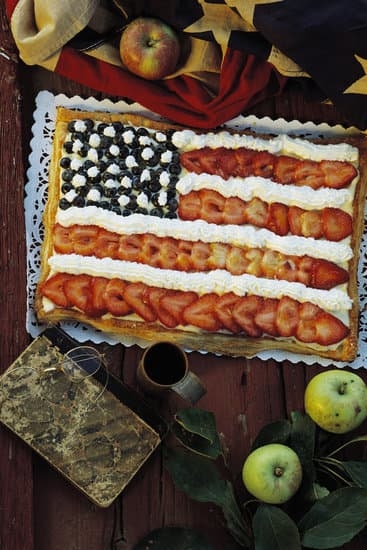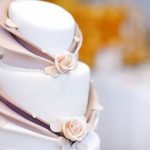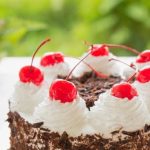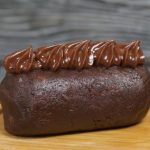When it comes to creating visually stunning cakes, icing decorations play a crucial role in taking the presentation to the next level. Whether it’s a simple swirl of buttercream or intricate royal icing details, these decorations can truly elevate the overall look of a cake. In this article, we will delve into the art of making icing decorations for cakes, guiding you through the process from start to finish.
One key aspect that sets apart a plain cake from a show-stopping masterpiece is the type of icing used for decorations. From smooth and creamy buttercream to versatile fondant and elegant royal icing, each type offers unique possibilities for creating stunning designs on cakes. By exploring different types of icing suitable for decorations, you can unleash your creativity and personalize your cakes with flair.
To embark on your journey of creating beautiful icing decorations, it’s essential to have the right tools and materials at hand. Piping bags, tips in various shapes and sizes, food coloring for customizing shades, and edible embellishments for added flair are just some of the essentials you’ll need in your decorating arsenal. With the right tools and materials in place, you can confidently navigate through the process of making eye-catching icing decorations for your cakes.
Types of Icing
When it comes to making icing decorations for cakes, choosing the right type of icing is crucial in achieving the desired look and taste. There are several options to consider, each with its unique characteristics and uses. Here are some common types of icing suitable for creating beautiful decorations:
- Buttercream: Buttercream is a popular choice for icing decorations due to its creamy texture and ability to hold intricate designs. It is easy to work with and can be flavored and colored in various ways.
- Royal Icing: Royal icing is a smooth, hard-drying icing that works well for detailed piped designs like intricate lacework or delicate flowers. It sets firmly, making it ideal for constructing elaborate structures.
- Fondant: Fondant is a pliable sugar paste that can be rolled out and draped over cakes to create a smooth, polished finish. It is also perfect for sculpting three-dimensional figures or covering cupcakes.
- Ganache: Ganache is a rich, chocolate-based icing that gives cakes a decadent finish. It can be poured over cakes for a glossy effect or whipped into soft peaks for piping elegant swirls and curls.
Each type of icing has its strengths and weaknesses, so consider the design requirements of your cake before choosing the best option for your decoration needs.
Understanding how to make icing decorations for cakes involves not only selecting the right type of icing but also having the necessary tools and materials at hand. To create stunning designs, here are some essential items you will need:
- Piping bags: Disposable or reusable piping bags allow you to pipe different shapes and patterns with precision.
- Piping tips: Various tips like round tips, star tips, leaf tips, and petal tips help achieve different designs and textures on your decorations.
- Food coloring: Gel or powdered food coloring provides vibrant hues without altering the consistency of the icing.
- Edible embellishments: Sprinkles, edible pearls, glitter, and fondant accents add texture and visual interest to your decorations.
Having these tools handy will make the process of creating stunning icing decorations for your cakes much easier and more enjoyable. Experiment with different combinations of icing types and decoration techniques to unleash your creativity in cake decorating.
Tools and Materials
When it comes to creating beautiful icing decorations for cakes, having the right tools and materials is essential. Whether you’re a beginner or a seasoned baker, having the proper equipment can make the process smoother and more enjoyable. Here is a list of essential items you will need to make stunning icing decorations for your cakes:
- Piping bags: These are essential for piping out the icing onto the cake. Disposable piping bags are convenient for easy cleanup, while reusable ones are eco-friendly.
- Tips: Piping tips come in various shapes and sizes, allowing you to create different designs and patterns. Some popular tips include round tips, star tips, leaf tips, and petal tips.
- Food coloring: To add vibrant colors to your icing decorations, you will need gel-based food coloring. Make sure to use a small amount at a time to achieve the desired shade.
- Edible embellishments: Sprinkles, edible glitter, pearls, and fondant accents can take your icing decorations to the next level. Be creative with how you use these embellishments on your cakes.
Having these tools and materials on hand will set you up for success when it comes to creating intricate and eye-catching icing decorations. Remember to experiment with different combinations and techniques to discover what works best for you.
In addition to the tools listed above, it’s also helpful to have a turntable for easier cake decorating, a spatula for smoothing out the icing, and parchment paper for practicing your piping skills before decorating the cake itself. Once you have gathered all your supplies, you’ll be ready to dive into the world of creating beautiful icing decorations for your cakes.
Lastly, don’t forget that practice makes perfect when it comes to mastering the art of making icing decorations for cakes. Don’t be afraid to try new things and challenge yourself with different designs and patterns. With patience and creativity, you’ll soon be able to adorn your cakes with professional-looking icing decorations that will impress everyone who sees them.
Preparation
Preparing the icing for cake decorations is a crucial step in ensuring the success of your design. To start, gather all the necessary tools and ingredients as listed in the previous section. Different types of icing require different preparation methods, so it’s important to follow the specific instructions for the icing you choose to work with.
For buttercream, you will need to cream softened butter with powdered sugar until smooth and creamy. Add a small amount of milk or cream as needed to achieve the desired consistency for piping.
When working with royal icing, mix together powdered sugar and meringue powder before gradually adding water until you reach the right thickness. For fondant, knead store-bought or homemade fondant until pliable and roll it out to be used as a base for decorations. Ganache, made from chocolate and cream, should be cooled to a spreadable consistency before being used for truffle-like decorations on cakes.
To achieve intricate designs and shapes when making icing decorations for cakes, it’s essential to have the right consistency of icing for piping. Depending on the design you intend to create, adjust the consistency of your icing by adding more liquid (milk or water) if it’s too thick or more powdered sugar if it’s too runny.
Practice piping on a flat surface or parchment paper before decorating your cake to get comfortable with how the icing flows through your chosen tips.
One helpful tip is to use gel food coloring instead of liquid food coloring when tinting your icing. Gel colors are more concentrated and won’t affect the consistency of your icing as much as liquid ones do.
Remember that achieving the perfect consistency for your icing may take some trial and error, so don’t be afraid to experiment with different ratios until you find what works best for your particular design. By mastering this step in preparing icing decorations, you’ll be well on your way to creating beautifully decorated cakes that are sure to impress.
| Materials | Tools |
|---|---|
| Powdered sugar | Piping bags |
| Butter/shortening | Piping tips |
| Milk/Cream | Gel food coloring |
Piping Techniques
Rosettes
One of the classic piping techniques that never goes out of style is creating rosettes on cakes. To make rosettes, you will need a piping bag fitted with a star-shaped tip. Begin by holding the piping bag vertically above the cake surface and applying consistent pressure while swirling the icing in a circular motion.
This technique creates beautiful swirls resembling delicate roses. You can vary the size of the rosettes by adjusting the pressure and speed of your piping hand.
Leaves
Adding leaf accents to your cake design can bring a touch of nature and elegance to your creation. To pipe leaves, use a leaf tip attached to your piping bag filled with green-colored icing. Hold the piping bag at a 45-degree angle to the cake surface and gently squeeze while moving the tip in a back-and-forth motion. The shape and size of the leaves can be adjusted by controlling the pressure applied to the piping bag.
Flowers and Borders
Creating floral decorations and borders using different piping techniques can enhance the overall aesthetic appeal of your cake. For flowers, consider using petal tips or round tips to achieve intricate floral patterns like daisies or sunflowers.
Borders can be made using star tips or round tips to create scalloped or zig-zag edges around the cake’s perimeter. Experimenting with various combinations of tips, colors, and designs will allow you to personalize your cake decorations according to specific themes or occasions.
Mastering these essential piping techniques opens up endless possibilities for decorating cakes with beautiful icing designs. Practice, patience, and attention to detail are key in perfecting each technique and achieving professional-looking results on your cakes. Don’t be afraid to experiment with different styles and embellishments to showcase your unique creativity through icing decorations for cakes.
Coloring and Flavoring
When it comes to making icing decorations for cakes, coloring and flavoring play a significant role in enhancing the overall appearance and taste of the final product. By selecting the right colors and flavors, you can match the theme of your cake or add a unique twist to your design. There are various tips and techniques that can help you achieve the desired result without compromising on the quality of your icing decorations.
Coloring Icing
One common method of coloring icing is by using gel or liquid food coloring. Gel coloring is preferred by many decorators as it does not change the consistency of the icing compared to liquid coloring.
Start by adding a small amount of color to your icing and gradually increase until you reach the desired shade. You can also mix different colors to create custom shades or use natural food coloring options like beetroot powder, turmeric, matcha powder, or blue butterfly pea flower extract for a healthier alternative.
Flavoring Icing
Adding flavor extracts can elevate the taste of your icing decorations. Popular choices include vanilla, almond, lemon, and peppermint extracts. Make sure to use high-quality extracts for maximum flavor impact. For a natural approach, consider using fresh citrus zest, espresso powder, or spices like cinnamon or nutmeg to infuse unique flavors into your icing. Experiment with different combinations to find what complements your cake best and enhances the overall experience for your taste buds.
Incorporating themed elements into your icing decorations can tie everything together beautifully on your cake. Whether you’re creating a birthday cake with vibrant colors, a wedding cake with elegant details, or holiday-themed treats, taking extra care in coloring and flavoring your icing will make your creations stand out and leave a lasting impression on anyone who tries them.
So next time you embark on decorating a cake with intricate designs, remember these tips on how to make icing decorations that not only look stunning but also taste amazing.
Storage and Preservation
Storing and preserving icing decorations is crucial to ensure that they maintain their freshness and shape until you are ready to use them on your cakes. Proper storage techniques can also help prevent the decorations from wilting, melting, or losing their vibrant colors. Here are some guidelines to follow when storing and preserving icing decorations:
One of the most important things to remember when storing icing decorations is to keep them in a cool, dry place away from direct sunlight. Exposure to heat and humidity can cause the decorations to soften or lose their shape. It is best to store them in an airtight container or a cake box lined with parchment paper to protect them from any external elements.
If you are making icing decorations in advance, you can store them in the refrigerator for short-term preservation. However, be cautious of condensation forming on the decorations when taking them out of the fridge as this can lead to color bleeding or deterioration. To avoid this, allow the decorations to come to room temperature gradually before using them on your cake.
For long-term storage, especially for delicate decorations like royal icing flowers, you can consider freezing them. Place the decorations on a baking sheet lined with wax paper and freeze them until they are firm. Once frozen, transfer them into an airtight container or resealable bag with layers of parchment paper in between each decoration to prevent breakage. When you are ready to use the decorations, allow them to thaw at room temperature before placing them on your cake.
Overall, by following these guidelines on storing and preserving icing decorations, you can ensure that they retain their quality and appearance until you are prepared to decorate your cakes. Remember that proper storage not only maintains the freshness of the decorations but also helps maintain their intricate designs intact for a visually stunning presentation.
Troubleshooting
Tricky mishaps can occur even when you follow every step meticulously while making icing decorations for cakes. One of the common issues that bakers face is clogged decorating tips. This can happen due to air bubbles or dried icing inside the tip, obstructing the smooth flow of icing.
To unclog the tip, you can try gently tapping it on a surface or using a toothpick to carefully remove any blockages. Ensuring that your icing is at the right consistency and free from lumps can also help prevent clogging issues.
Maintaining the right consistency of your icing is crucial for successful cake decorating. If you find that your icing is too thin and runny, you can thicken it by gradually adding more confectioners’ sugar until it reaches the desired thickness.
On the other hand, if your icing is too thick and difficult to pipe, you can add small amounts of water or milk to loosen it up. Regularly checking and adjusting the consistency of your icing throughout the decorating process can help avoid potential problems.
Color bleeding in icing decorations can be frustrating, especially when trying to create intricate designs on cakes. This issue often occurs when using liquid food coloring or adding too much color to the icing. To prevent color bleeding, consider using gel food coloring instead of liquid ones as they are more concentrated and less likely to cause bleeding. Additionally, allow your base layer of icing to set before adding contrasting colors on top to minimize bleeding between layers.
| Common Issues | Solutions |
|---|---|
| Clogged Tips | Tap gently or use a toothpick; Ensure right consistency |
| Icing Consistency Problems | Add sugar for thickening; Add water for loosening |
| Color Bleeding | Use gel food coloring; Let base layer set before adding more color |
Conclusion
In conclusion, mastering the art of making icing decorations for cakes can truly elevate the visual appeal of your creations. Whether you choose to work with buttercream, royal icing, fondant, or ganache, there are endless possibilities for creating stunning designs that will surely impress your family and friends. By investing in essential tools like piping bags, tips, and food coloring, you can explore various piping techniques to unleash your creativity.
It is important to pay attention to the preparation process, ensuring that your icing has the right consistency for piping and designing decorations effectively. Experiment with different colors and flavors to match the theme and taste of your cake, utilizing natural food coloring and extracts for a delicious finish. Remember to store and preserve your icing decorations properly to maintain their freshness and shape until they are ready to be placed on the cake.
As you embark on your journey of creating beautiful icing decorations for cakes, do not be afraid to get creative and try out new techniques. Embrace challenges that may arise along the way, such as clogged tips or color bleeding, as opportunities for learning and improvement.
With practice and patience, you will soon master the art of making intricate icing decorations that will make your cakes truly stand out at any celebration. Enjoy the process and have fun experimenting with different designs.
Frequently Asked Questions
How Do You Mix Icing Sugar for Decorations?
Mixing icing sugar for decorations involves combining the powdered sugar with a liquid such as water, milk, or lemon juice until you achieve the desired consistency. It’s important to start with small amounts of liquid and gradually add more until you reach the right thickness.
What Kind of Icing Do You Use to Decorate a Cake?
There are different types of icing that can be used to decorate a cake, including buttercream, royal icing, fondant, and ganache. Buttercream is popular for its smooth texture and versatility, while royal icing is great for intricate designs. Fondant offers a sleek finish, and ganache provides a rich chocolate flavor.
What Do You Need to Make Cake Decorations?
To make cake decorations, you will need tools like piping bags and tips for creating different patterns and shapes with icing. Other essentials include food coloring to add vibrant hues to your decorations, as well as edible embellishments like sprinkles, pearls, or edible glitter to make your creations stand out.
Practice and patience are also key ingredients in mastering the art of cake decorating.

Welcome to our cake decorating blog! My name is Destiny Flores, and I am the proud owner of a cake decorating business named Cake Karma. Our mission is to provide delicious, beautiful cakes for all occasions. We specialize in creating custom cakes that are tailored specifically to each customer’s individual needs and tastes.





